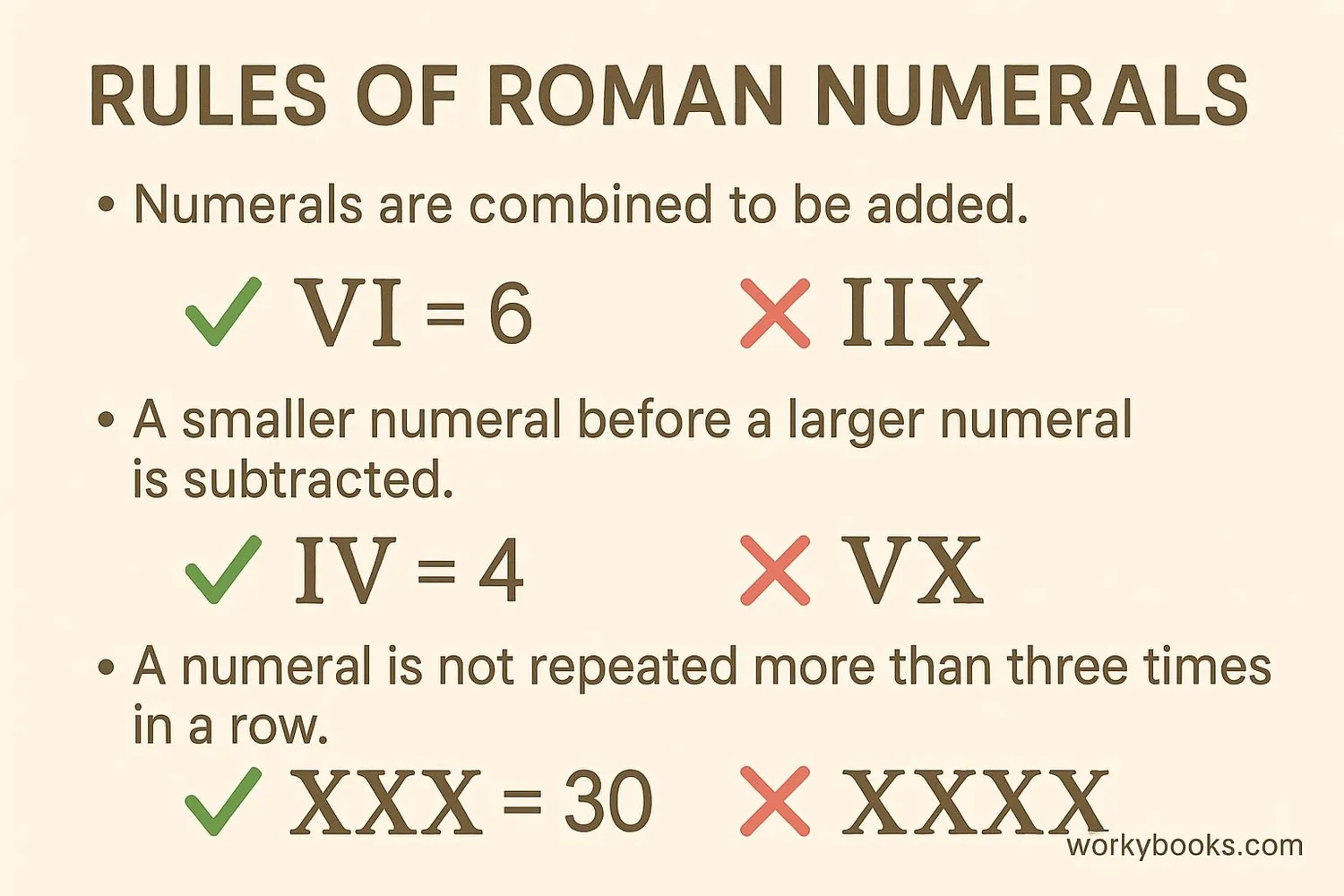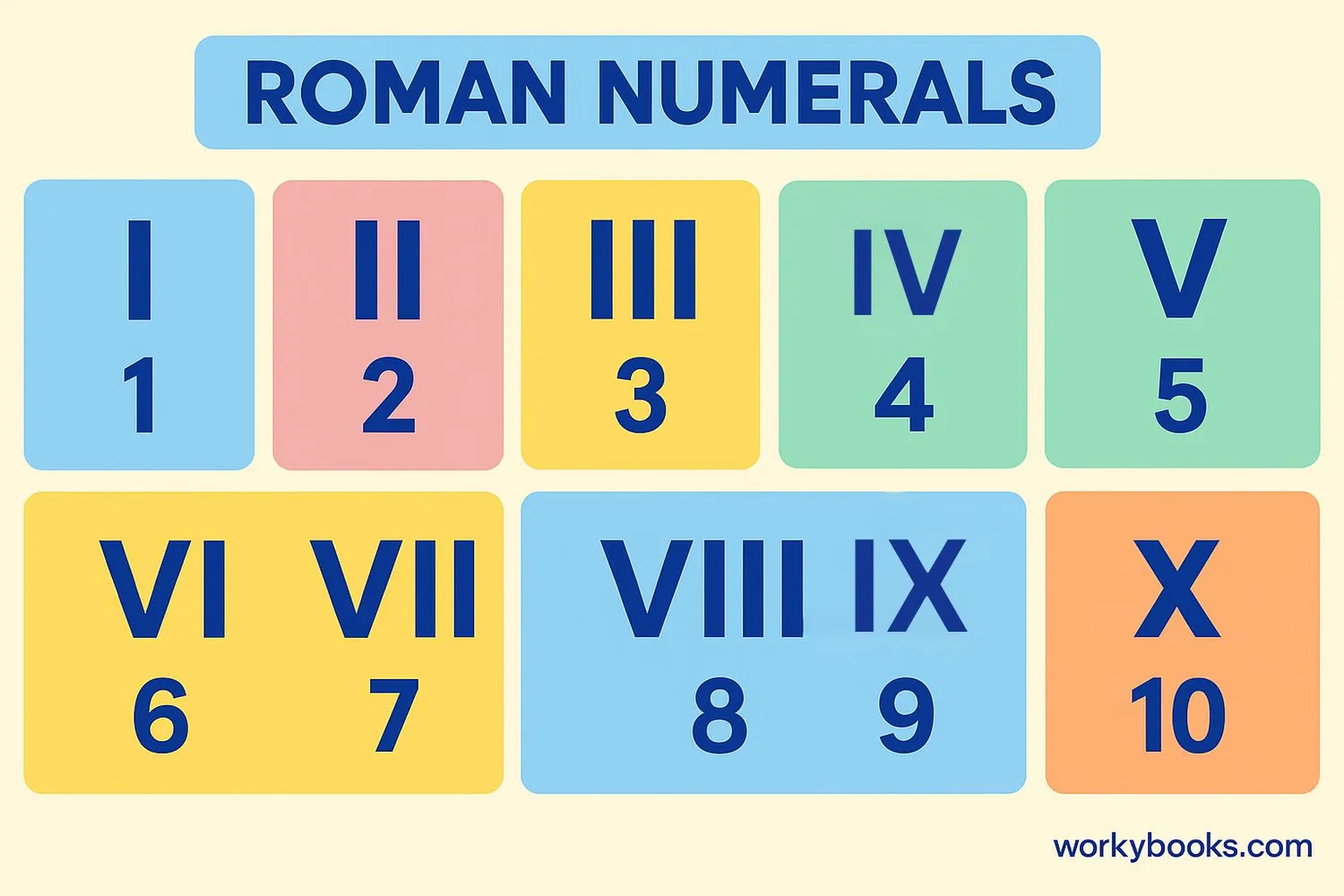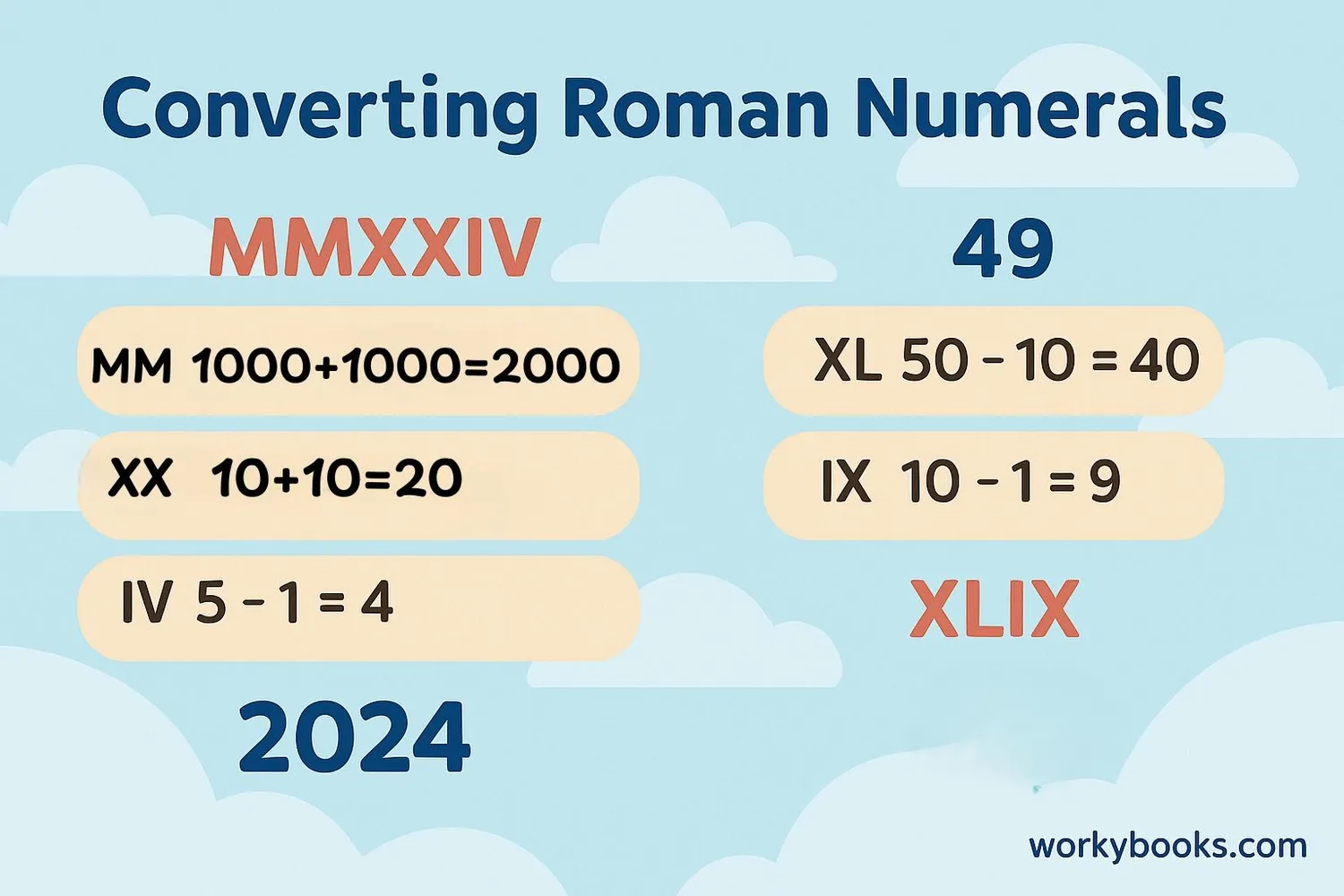Roman Numerals - Definition, Examples, Quiz, FAQ, Trivia
Learn to read and write Roman numerals with easy explanations, charts, and practice activities
What are Roman Numerals?

Roman numerals are a numeral system that originated in ancient Rome around 500 BCE. Unlike our modern number system (Hindu-Arabic numerals), Roman numerals use letters from the Latin alphabet to represent values:
I = 1, V = 5, X = 10, L = 50, C = 100, D = 500, M = 1000
This system was used throughout the Roman Empire and continued to be used in Europe long after the empire fell. Today, we still use Roman numerals for special purposes like numbering book chapters, indicating years on monuments, and in clock faces.
Key Concept
Roman numerals use letters instead of numbers. The seven basic symbols are I, V, X, L, C, D, and M.
Rules for Roman Numerals

To read and write Roman numerals correctly, you need to follow specific rules:
- Addition Rule: When a numeral is followed by one of equal or lesser value, add their values (VI = 5 + 1 = 6)
- Subtraction Rule: When a smaller numeral appears before a larger one, subtract its value (IV = 5 - 1 = 4)
- Repetition Rule: Numerals I, X, C, and M can be repeated up to three times (III = 3, but IIII is incorrect for 4)
- No Repetition Rule: V, L, and D are never repeated (VV is incorrect for 10, use X instead)
- Placement Rule: Only I, X, and C can be used for subtraction (I before V or X, X before L or C, C before D or M)
• 9 = IX (10 - 1) not VIIII
• 40 = XL (50 - 10) not XXXX
• 90 = XC (100 - 10) not LXXXX
• 400 = CD (500 - 100) not CCCC
Remember
The subtraction rule only applies to I, X, and C. You cannot write IL for 49 (correct is XLIX).
Roman Numerals Chart

This chart will help you quickly find the Roman numeral equivalent for numbers 1 through 100:
| Number | Roman Numeral | Number | Roman Numeral |
|---|---|---|---|
| 1 | I | 51 | LI |
| 2 | II | 52 | LII |
| 3 | III | 53 | LIII |
| 4 | IV | 54 | LIV |
| 5 | V | 55 | LV |
| 6 | VI | 56 | LVI |
| 7 | VII | 57 | LVII |
| 8 | VIII | 58 | LVIII |
| 9 | IX | 59 | LIX |
| 10 | X | 60 | LX |
| 11 | XI | 70 | LXX |
| 12 | XII | 80 | LXXX |
| 13 | XIII | 90 | XC |
| 14 | XIV | 100 | C |
| 15 | XV | 500 | D |
| 20 | XX | 1000 | M |
| 30 | XXX | 2024 | MMXXIV |
| 40 | XL | 5000 | V̅ |
| 50 | L | 10000 | X̅ |
Chart Tip
Notice that numbers like 4, 9, 40, 90, 400, and 900 use subtraction (IV, IX, XL, XC, CD, CM).
Conversion Guide

Converting between Roman numerals and our number system requires understanding the rules and symbols. Let's practice:
Conversion Principles
1. Start from the left and move right
2. If a smaller numeral comes before a larger one, subtract
3. Otherwise, add the values
M (1000) + M (1000) = 2000
X (10) + X (10) = 20
IV (5 - 1 = 4) = 4
Total = 2000 + 20 + 4 = 2024
40 = XL (50 - 10)
9 = IX (10 - 1)
Total = XL + IX = XLIX
(Not IL - remember the placement rules!)
Convert LXXVIII to a number (Answer: 78)
Convert 99 to Roman numerals (Answer: XCIX)
Conversion Tip
Break down large numbers into thousands, hundreds, tens, and ones. Convert each part separately.
Roman Numerals Quiz
Test your understanding of Roman numerals with this 5-question quiz. Choose the correct answer for each question.
Frequently Asked Questions
Here are answers to common questions about Roman numerals:
Roman Numerals Trivia
Discover interesting facts about Roman numerals:
Long-Lasting System
Roman numerals were used as the primary number system in Europe for over 1,500 years! They were gradually replaced by the Hindu-Arabic numeral system between the 14th and 16th centuries.
No Place Value
Unlike our number system, Roman numerals don't use place value. The position of symbols doesn't change their value (I always means 1, whether it's at the beginning or end of a numeral).
Movie Magic
Movie copyright dates are written in Roman numerals to make them harder to alter. This tradition began in the early 20th century and continues today.
The Largest Numeral
The longest Roman numeral under 4,000 is 3,888 (MMMDCCCLXXXVIII) with 15 characters. The longest possible Roman numeral is theoretically infinite, but impractical for everyday use!


